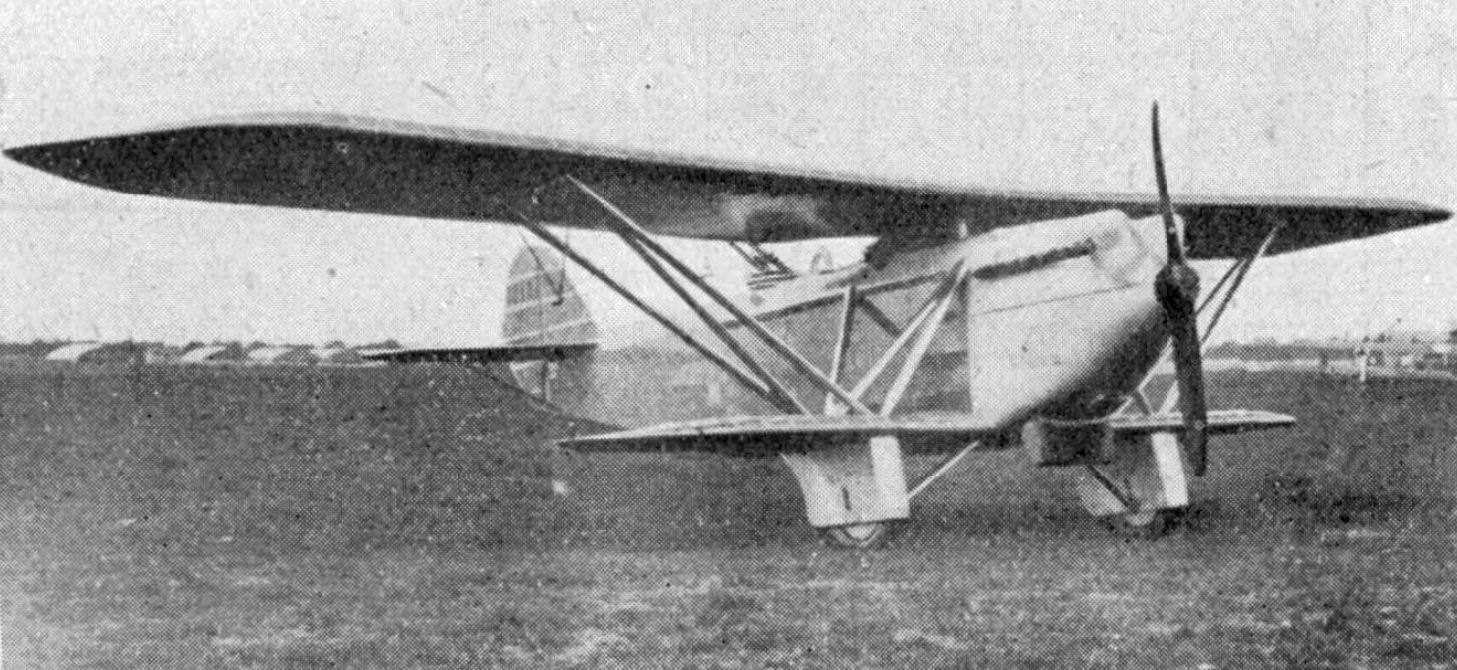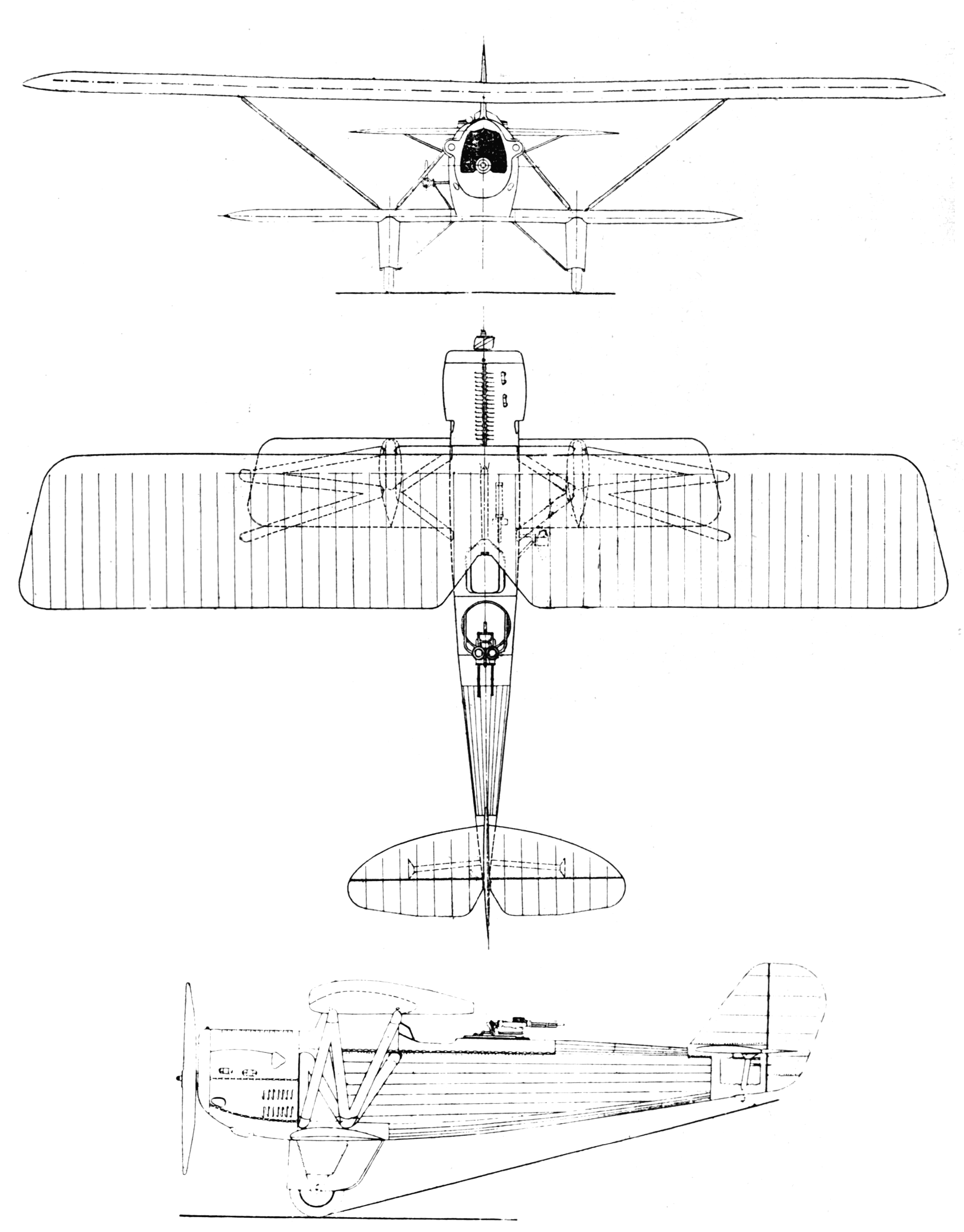Caudron C.17 on:
[Wikipedia]
[Google]
[Amazon]
The Descamps 17 A.2 was a two-seat reconnaissance fighter built under a


French
French (french: français(e), link=no) may refer to:
* Something of, from, or related to France
** French language, which originated in France, and its various dialects and accents
** French people, a nation and ethnic group identified with Franc ...
government programme of 1923. Two versions, with different engines, were tested and six examples were built under licence by Caudron
The Société des Avions Caudron was a French aircraft company founded in 1909 as the Association Aéroplanes Caudron Frères by brothers Gaston and René Caudron. It was one of the earliest aircraft manufacturers in France and produced planes for ...
as the Caudron C.17 A.2.
Design and development
The Descamps A2 was designed to a government programme for a two-seat reconnaissance aircraft, a category denoted by the military code A2. When the first prototype appeared in March 1924 the manufacturer's name was hyphenated with that of the designer, André Brunet, though the order varied. The first accounts of it did not include a Descamps type number, though according to a more recent source it was the Descamps-Brunet DB-16. Initially, it was powered by aLorraine-Dietrich 12D
The Lorraine 12D, also referred to as Lorraine-Dietrich 12D, was a series of water-cooled V12 engines produced by the French company Lorraine-Dietrich. The first variant began production in 1917, and the engines were used to power bombers for the ...
V-12 engine but by 1926 it had received a Lorraine-Dietrich 12E
The Lorraine 12E Courlis was a W-12 (broad arrow) aero engine produced by the French company Lorraine-Dietrich during the 1920s and 1930s.
Variants
;12E:
;12Eb:
;12Ebr:
;12Ed:
;12Edr:
;12Ee:
;12Ew:The standard Eb fitted with a supplementary s ...
W-12 engine. This version, identical to the DB-16 apart from the new and somewhat heavier engine, was designated the Descamps 17. The new engine improved performance, increasing the top speed at sea level from .
The structure of the Descamps A.2 was all metal. Such designs were quite new at this time and were criticised as being more difficult to repair compared with wooden-framed machines but Brunet's design enabled any part to be exchanged rapidly. It had no wire bracing and required no rigging. The A2 was a sesquiplane
A biplane is a fixed-wing aircraft with two main wings stacked one above the other. The first powered, controlled aeroplane to fly, the Wright Flyer, used a biplane wing arrangement, as did many aircraft in the early years of aviation. While a ...
, with an upper wing with twice the span and 3.4 times the area of the lower one, which was not only short but narrow. The two wings had similar plans, rectangular apart from straight angled tips. Only the upper wing carried aileron
An aileron (French for "little wing" or "fin") is a hinged flight control surface usually forming part of the trailing edge of each wing of a fixed-wing aircraft. Ailerons are used in pairs to control the aircraft in roll (or movement around ...
s. Both wings were built around two I-section spars and were braced together on each side by two sets of airfoil
An airfoil (American English) or aerofoil (British English) is the cross-sectional shape of an object whose motion through a gas is capable of generating significant lift, such as a wing, a sail, or the blades of propeller, rotor, or turbine.
...
section, N-form interplane struts, one from the upper fuselage to mid-way along the lower wing and the other from there outwards to the upper wing. There was significant stagger, with the leading edge of the lower wing ahead of that of the upper, so the N-struts leaned backwards. There was no dihedral on the lower wing but the upper one was set at 1.5° and slightly swept (2°). The lower wing was mounted on the lower fuselage frame and the upper on a very short upper fuselage pillar. The wings, like the rest of the aircraft, were fabric covered.
The deep but narrow rectangular section fuselage, constructed from duralumin
Duralumin (also called duraluminum, duraluminium, duralum, dural(l)ium, or dural) is a trade name for one of the earliest types of age-hardenable aluminium alloys. The term is a combination of '' Dürener'' and ''aluminium''.
Its use as a tra ...
tubes, tapered to a knife edge at the rear and had rounded decking. The nose differed according to engine; the early V-12 had two distinct bulges over the cylinders and a separate rectangular radiator
Radiators are heat exchangers used to transfer thermal energy from one medium to another for the purpose of cooling and heating. The majority of radiators are constructed to function in cars, buildings, and electronics.
A radiator is always a ...
, attached to the fuselage underside, which could be partially retracted by the pilot, whereas the three cylinder banks of the W-12 required an additional central bulge and the radiator was integrated into the nose in front of the engine. There were two open cockpit
A cockpit or flight deck is the area, usually near the front of an aircraft or spacecraft, from which a Pilot in command, pilot controls the aircraft.
The cockpit of an aircraft contains flight instruments on an instrument panel, and the ...
s. The pilot sat in front under the trailing edge of the wing, which had a V-shaped cut-out to improve his field of view. He controlled two fixed, forward firing machine guns and behind him the observer's position was equipped with two more on a gun mount. This post was far enough aft to provide a good all-round view. The tail was conventional, with the tailplane, which had swept leading edges, placed near the top of the fuselage and braced by a single strut on each side from below. The angle of incidence of the tailplane was in-flight adjustable for trim and its elevators were balanced. The vertical tail was rounded and reached down to the keel, operating in a small elevator cut-out. The Descamp's landing gear had mainwheels mounted under the wings at the meeting point of the inner and outer interplane struts, providing a wide track. There was no cross-axle; instead the wheels were mounted on rubber shock absorber
A shock absorber or damper is a mechanical or hydraulic device designed to absorb and damp shock impulses. It does this by converting the kinetic energy of the shock into another form of energy (typically heat) which is then dissipated. Most sh ...
s within trouser fairings. This arrangement allowed bombs to be released from under the fuselage; up to 3× bombs could be carried. The tailskid was free to pivot to assist ground steering.
Operational history
Caudron
The Société des Avions Caudron was a French aircraft company founded in 1909 as the Association Aéroplanes Caudron Frères by brothers Gaston and René Caudron. It was one of the earliest aircraft manufacturers in France and produced planes for ...
purchased a licence to build the Descamps 17 A2 from 1927 as the Caudron C.17 A2. After the aircraft had satisfied the reconnaissance programme requirements, six were constructed for the Armée de l'Air.
A notable tour of six European countries was made between 18 October and 19 November 1927 by Massot and an engineer in a civil registered C.17. They covered .
Variants
;Descamps 16 or DB-16:
Lorraine-Dietrich 12D
The Lorraine 12D, also referred to as Lorraine-Dietrich 12D, was a series of water-cooled V12 engines produced by the French company Lorraine-Dietrich. The first variant began production in 1917, and the engines were used to power bombers for the ...
V-12 engine
;Descamps 17 or DB-17: Lorraine-Dietrich 12E
The Lorraine 12E Courlis was a W-12 (broad arrow) aero engine produced by the French company Lorraine-Dietrich during the 1920s and 1930s.
Variants
;12E:
;12Eb:
;12Ebr:
;12Ed:
;12Edr:
;12Ee:
;12Ew:The standard Eb fitted with a supplementary s ...
W-12 engine
;Caudron C.17 A.2: Caudron-built Descamps 17.
Operators
;: L'Armée de l'AirSpecifications (Descamps 17)

References
{{reflist, 2, refs= {{cite book , title=Les Avions Caudrons , last=Hauet , first=André, year=2001 , volume=1, publisher=Lela Presse, location=Outreau, isbn=2 914017-08-1, page=199 {{cite magazine , date=1–15 March 1924 , title=L'avion Brunet-Descamps A2, magazine=L'Aérophile, volume=32 , issue=5–6 , pages=157–9, url=http://gallica.bnf.fr/ark:/12148/bpt6k6554816n/f163 {{cite journal , date=15 March 1924 , title=L'Avion Descamps-Brunet, journal=Les Ailes, issue=152, url=http://gallica.bnf.fr/ark:/12148/bpt6k6556098c/f2 {{cite magazine , date=31 July 1924 , title= The Descamps-Brunet A2 Sesquiplane, magazine= Flight, volume=XVI , issue=31 , pages=473–4 , url=http://www.flightglobal.com/pdfarchive/view/1924/1924%20-%200473.html {{cite magazine , date=2 December 1926 , title= The Paris Aero Show 1926 - Descamps, magazine= Flight, volume=XVIII , issue=48 , page=778 , url= http://www.flightglobal.com/pdfarchive/view/1926/1926%20-%200878.html {{cite magazine , date=16 December 1926 , title= The Paris Aero Show 1926 (cont.) - Descamps, magazine= Flight, volume=XVIII , issue=50, pages=830–831 , url= http://www.flightglobal.com/pdfarchive/view/1926/1926%20-%200974.html {{cite journal , date=10 December 1926 , title=La Xe Exposition Internationale de l'Aéronautique, journal=Le Sport Universel illustré, issue=1241 , page=829, url=http://gallica.bnf.fr/ark:/12148/bpt6k65806510/f483 {{cite web , url=http://www.aviafrance.com/aviafrance1.php?ID=10253&ID_CONSTRUCTEUR=1559, title=Descamps-Brunet DB-16 , author=Bruno Parmentier , access-date=25 July 2015 Sesquiplanes 1920s French military reconnaissance aircraft Single-engined tractor aircraft Aircraft first flown in 1924 Biplanes with negative stagger